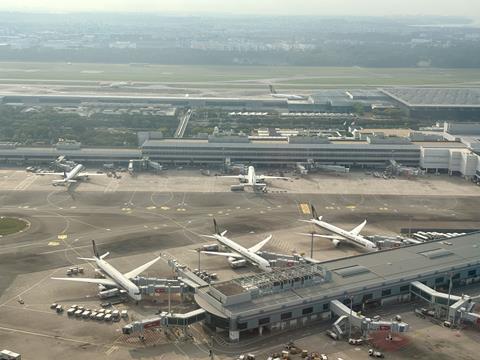International air traffic in the Asia-Pacific continued to rebound in February, with airlines benefiting from a surge in leisure travel during the Lunar New Year holiday period.
Asia-Pacific airlines carried 27 million international passengers in February, up 56.7% from a year earlier, according to the Association of Asia Pacific Airlines.

International RPKs jumped 54.4% and ASKs jumped 53.1%, while load factors rose 0.7 percentage points to 81.6%.
“During the first two months of the year, Asian carriers saw continued robust growth in international passenger markets, with 54 million passengers carried, an increase of 53% compared with the corresponding period in the previous year,” says AAPA director general Subhas Menon.
“The strong demand came on the back of ongoing network expansion by carriers, with load factors at levels seen before the pandemic.”
Asia-Pacific airlines also enjoyed a strong cargo market in February on the back of business and e-commerce activity.
February’s FTK’s rose 10.2% on year, while FATKs rose 20.8%. Freight load factors, however, fell 5.5 percentage points to 57.3%.
“The upturn in global economic activity and rise in business confidence levels augurs well for air cargo markets in the coming months,” says Menon.
“Correspondingly, the demand outlook for international travel is positive based on forward booking trends. The region’s carriers remain nimble and proactive in exploring new avenues of growth, whilst at the same time tackling numerous challenges including rising operational costs and stiff competition.”
AAPA TO HOLD TURBOPROP SAFETY CONFERENCE
The AAPA recently announced that it will hold a safety conference focused on turboprop airliner operations.
Running from 26-27 June in Kuala Lumpur, the Pacific Turboprop Safety Conference will look at safety issues unique to turboprops.
In addition it will address areas such as emergency response, safety culture, flight-data monitoring, plus specific airport and operational considerations.


























